How to avoid overpaying? Calculating heating bills using a common house meter

Prices for housing and communal services are rising to such an extent that they will soon make up a large part of the subsistence minimum.
Correct accounting and registration of thermal energy will allow you to compile accurate consumption statistics and reduce heat supply calculations, maintenance of heat transfer systems and reduce citizens' expenses.
Content
- Purpose of the general house heat meter
- Archiving of readings
- Several reasons to use a shared counter
- Changes in the calculation and recalculation procedure from 2012 to 2019
- How to calculate heat energy for heating using a common house meter
- Special cases
- How is control carried out in an apartment building?
- Installation of the device
- Useful video
- Conclusion
Purpose of the general house heat meter
The device is installed at the entrance and exit of the room, directly on the heat transfer channel. will not give a 100% guarantee that the data will be accurate, since heat loss, sensor error, uneven temperature field, weak contact, no one has cancelled. These are random factors that will complicate the calculation, but they will increase the accuracy anyway compared to a room without a sensor.

Photo 1. General house heat energy meter. The device is equipped with an electronic screen on which the readings are displayed.
- General house meter we display the sum of readings of all apartments. The main task is to eliminate data falsification or equipment error. The secondary task is to register errors and malfunctions. Let's consider the operating principle in order to understand what elements the calculations consist of.
- All heating devices are equipped with an LCD display., which displays all the information. Here you can also switch between menu sections. With its help, the state of the system at the current moment in time is controlled.
- The OPTO transmitter is included in the basic kit of most devices from European manufacturers. It converts signals from sensors, redirecting them to the PC control bus. It also provides more detailed information about the operation of the meter.
- The M-Bus module is designed to connect the meter to the central network and collect information. A group of devices are combined into a low-current (39V) network using a twisted pair and is connected to a hub, which sends periodic requests and generates a report for the heat supply organization.
- The radio module can transmit information without a wired connection over a distance of up to several hundred meters. To obtain information, a housing and utilities or heating organization employee tunes the receiver to this frequency, after which the readings and the current state of the system are displayed on the screen.
Errors that the counter detects:
- damage to the temperature sensor;
- damage to the energy consumption sensor;
- incorrect installation or loss of contact;
- presence of air in the flow path;
- low battery.
Archiving of readings
All information is transmitted to the main server, where it is stored. within 12 monthsThe storage period, frequency of sending requests and accuracy of the device can be adjusted manually.
Several reasons to use a shared counter
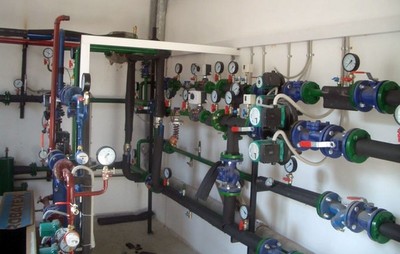
- counters are accurate distributes payments for thermal energy;
- meters save heat, since they do not take into account leaks and system errors;
- The counter reduces the frequency and extent of breakdowns to a minimum;
- promptly informs the service center about malfunctions;
- The meter speeds up and simplifies maintenance and control procedures.
Let's take a closer look Law No. 261 "On Energy Saving", according to which heating companies can be forced to install metering devices.
Reference. IN 2012 An amendment was made to the Russian legislation, according to which meters replaced with new ones. The old design suggested the possibility of falsifying readings or twisting with a magnet. In addition, "Soviet" meters are far from being the standard of reliability and accuracy.
Let's imagine the situation: in a multi-story building on 50 apartments faulty or broken meter. If, when issuing monthly receipts to residents, a shortage is discovered, this will, at a minimum, delay the verification process. The most likely scenario is that residents will be given a deferment until the housing and utilities staff complete the calculations, and next month they will have to pay immediately for 2 months.
Such a situation will at least “freeze” some funds and create inconvenience. If there is a debtor in the house with arrears, then Another month of non-payment will not be beneficial.
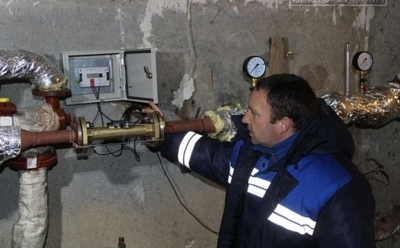
Considering the general temperature field that comes from the inter-apartment walls and partitions, the price of heating may be increased 20% above normal.
And also the device logs errors and failures in the systemso that housing and communal services workers can assess the damage caused to residents and compensate for it.
Agree, it would be stupid to pay a whole month heating season, if within two weeks repair work was carried out.
Changes in the calculation and recalculation procedure from 2012 to 2019
- In 2012 The procedure was very primitive and was easily bypassed by unscrupulous citizens using twists and magnets that rewinded the readings. The data from the entire house was summed up and on their basis a quarterly count was compiled.
- In 2014 In some houses, they began installing common house meters to simplify the counting procedure, but data falsification did not go away, which is why the counting slowed down. Housing and communal services workers calculated the difference between the general indicators and the specific ones, since some residents were suspected of deliberately substituting data.
- WITH 2016 all the meters in the house became connect to the main common house, which solved the problem of fraud.
How to calculate heat energy for heating using a common house meter
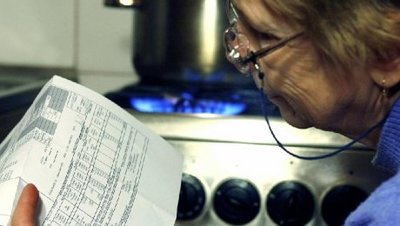
- From the 1st to the 25th of each month The system collects data and sends it to the main office of the organization supplying heat.
- Housing and communal services workers generate and send receipts to residents’ addresses.
- On the 25th of each month Residents receive notifications about the payment amount.
- Until the end of the month You must pay the receipt unless there is a valid reason for delay.
How to Calculate Correctly: Data for Calculations, Formulas
To date, there is no canonical algorithm for calculating heating fees. The final amount is influenced by:
- local climate (cold climate causes large heat losses);
- state of engineering and technical communications (with low system efficiency, the payment is higher, since the losses are greater);
- area of the premises;
- season.
Important! If there are several heating risers in the apartment, then there is no need to install meters on each of them. Calculations in this case are removed from the common building sensor.
Is there a centralized heating system in the house?
Payment calculation formula:
P = Vх (Tk/Tд) * K
Where P — the amount of payment, V — meter readings, Tk and Td — area of the premises, K — room heating standards.
If there is a common house and individual metering device
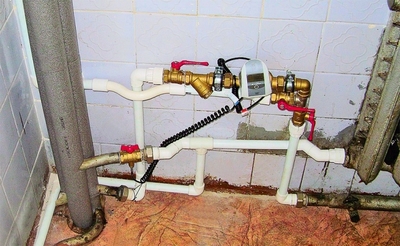
If an individual meter is installed, then the readings are taken only from him. The automated counting system eliminates the chance of error almost completely.
The receipt is issued and the amount is calculated at current ratesThe notification and calculation procedure is standard.
In the case of a homeowners association, payment is made according to the charter at the end of each season.
Special cases
In some cases, the procedure for calculating heat indicators becomes more complicated.
How to calculate indicators if payments are received only during the heating season
Most often, the payment methods are determined by the supplier company itself (exceptions are possible for HOAs). Some companies provide the opportunity to pay part of the amount for heating in the summer. Features of payment for heating in the summer season:
- It is impossible to verify the authenticity of the heat data. The amount is distributed evenly, which means that the amount for expenses in summer and winter is the same.
- You can choose an additional payment period yourself (then the periodic payment amount will be higher).
- By paying the entire amount at once, the tenant will protect himself from price increases., because I bought the body at a low rate.
The house does not have a common house heat meter installed.
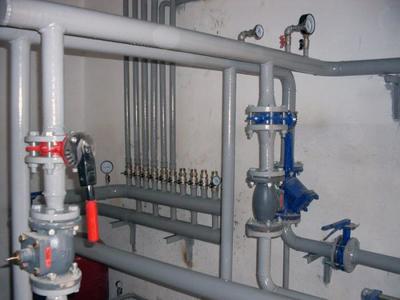
If there is no common meter installed in the house, then calculations are made according to the old algorithm. 2012, when the readings from all meters are summed up.
Houses without a control device are not that rare. This happens not because of the negligence of the residents or the head of the housing cooperative.
Gas companies do not always meet residents halfway and reject some projects to install meters, since it is profitable for them to round up the amount and receive payment at an increased rate. Especially if The meter has a non-standard configuration and does not comply with SNiP standards.
There is a general heat meter, but individual heating meters are not installed in all apartments.
A difficult situation that may require manual counting. If the meter shows data for each apartment separately, the problem is solved, but if not, you will have to count manually. You cannot simply divide the amount between all the apartments, since each will consume a different amount of heat.
The calculation can be performed if:
- Heating was paid for earlierThen you need to calculate how much heat has already been supplied and how much is left.
- If the tenant has a standard tariff, according to which a certain amount of thermal energy is allocated to it every month.
- If a heating protocol has been maintained since the beginning of the heating season (heating time, idle periods).
All apartments are equipped with individual heat meters.
The total of all residential apartments must be subtracted from the readings of the general meter. The remaining number divide equally between all apartments (if they match in area). This is how we get the payment amount for each apartment. To eliminate the possibility of error or simplify the calculation procedure, you need to seal the meter.
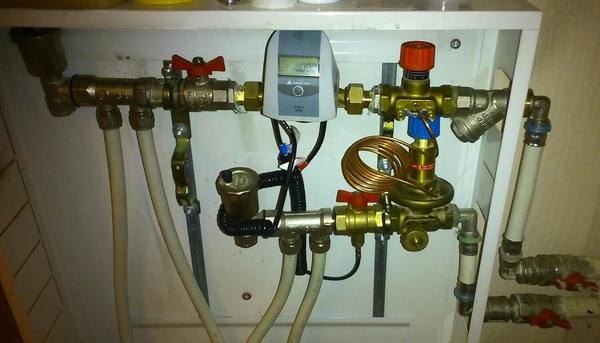
Photo 2. Individual electronic heating meter. The device is installed on the heating pipes.
Payment for heat in an apartment building where more than 50% of apartments are equipped with distributors
General house meter processes data from all apartments, but those that have individual meters will be calculated faster, and apartments without one will undergo additional inspection.
Difficulties in the control procedure
A significant disadvantage is when installing the meter. there is no way to accurately calculate the heat, so it will show the same data for both a small battery and a large segment, although several sections will emit more heat. In addition, to calculate this way, it is necessary that 75% of residents Install thermostats, otherwise the calculation will be incorrect.
Attention! Thermal insulation will help reduce heat loss, but not the current tariff, since the sensor measures data on the pipes, and not on the entire room. However, By installing insulation, the service fee will be reduced, after all, it will be possible to pay a lower tariff.
In order not to calculate the cost of services every month, the management organization will present preliminary calculations for heat, based on the readings of devices and statistics of resource supply. Recalculate the values twice a year, and depending on the difference between the estimated figures and the actual ones, adjustments are made.
The fee is charged throughout the year.
In this case, the calculation of indicators also has its own characteristics.
There are no common or individual heat meters in the building.
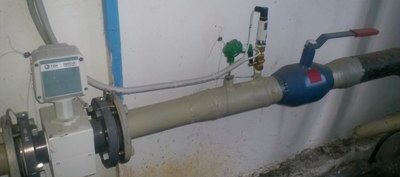
In this case, payment will be made at the standard rate, regardless of how much energy the tenant has used.
The payment amount will be divided into equal parts, which can be paid throughout the year.
There is a common house heat meter, apartment heat meters are not installed everywhere
A monthly fee will be charged based on the average meter reading and heating tariff. In other words, without individual meters, the tenant will overpay. on average by 20%, since the tariffs are calculated with a surcharge and with a safety factor of 1.2.
There is a common house heat meter, all apartments and non-residential premises are equipped with individual heat meters
In this case, the data from the general counter and from each individual one coincide and there is no need to count anything manually. Every month, payment is made according to the standard algorithm of the housing and communal services or homeowners association. In case of discrepancy or inconsistency of data, priority will be given to individual metering devices.
How is control carried out in an apartment building?
The control is carried out by housing and communal services or contractor companiesIf the inspection is unscheduled, you may be warned about it.
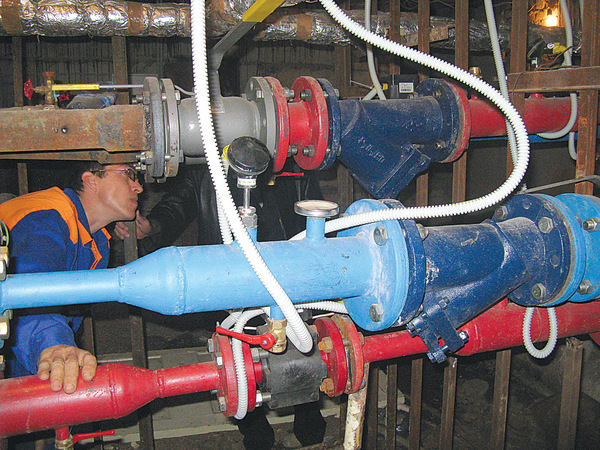
Photo 3. The process of monitoring heating communications in an apartment building. The inspection is carried out by a housing and utilities employee.
Scheduled inspections are underway without warning, at any time of the season. Maintenance and repair are also carried out by housing and communal services employees, but the meter supplier can do the repair if the warranty period has not expired. You can contact the service center yourself or through housing and communal services employees, but the right to repair the device remains only with the employees of the management organization.
Installation of the device
The installation of the metering device must be performed by a certified specialist, according to the rules and regulations of SNiP. Installation is carried out according to a project, the development of which may cost more than the device itself. Before installing the meter, a housing and utilities employee must check the heating system and utilities for compliance with standards. After installing the equipment, the employee also performs output control to ensure that the meter is working correctly, the data is sent to the server, and the heating system's operating algorithms are not violated.
Useful video
Watch a video that explains who should pay for the installation of a common house heat meter.
Conclusion
To avoid overpaying for heating, you need to study the operating algorithms, calculation formulas, tariffs and changes in legislation. The following can help you save:
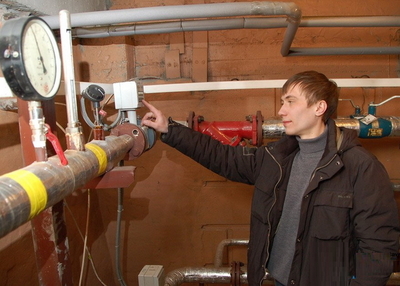
- repair and modification of utility lines;
- installation of a modern individual heating meter;
- connection of a common house meter;
- timely monitoring and diagnostics.
When distributing the budget of residents of a house or cooperative, you need to try to save as much as possible, so that the reserve fund can cover urgent and emergency costs. If you miss such a moment as heat energy control, then "funds for a rainy day" will always be missing.
Reference. Statistics show that 80% of residents are dissatisfied with tariffs for heating and receipts. Practically every second person doesn't understand, why his calculations on paper always turn out to be less than the real amount, and only 15% know the reasons overpayments.
Following all the advice you can reduce costs and simplify the procedure for paying for housing and communal services. And, to eliminate the chance of a program error or a typo in the receipt, you can calculate manually, using the formulas from this article.







